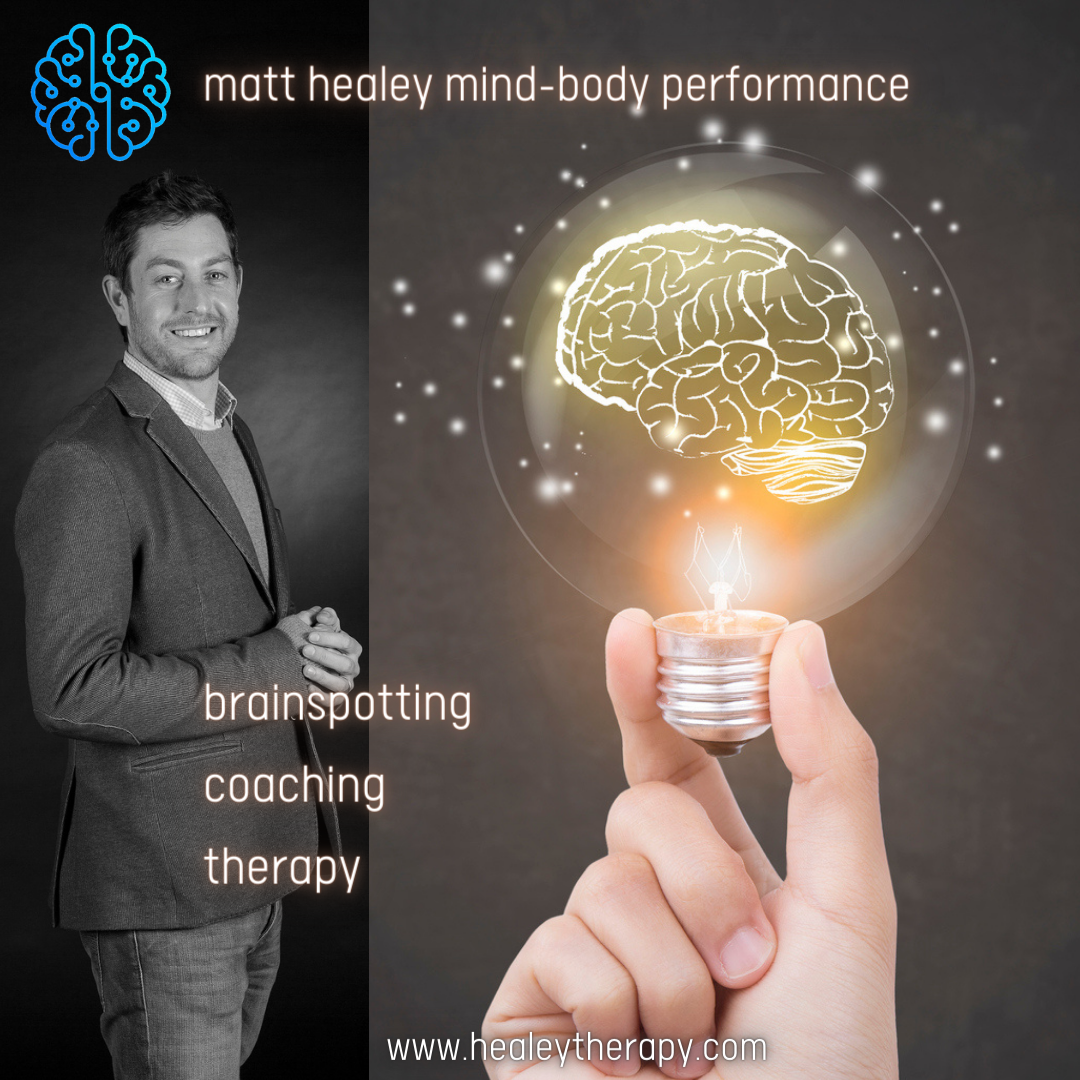Brainspotting is a powerful focused treatment method that works by identifying, processing, and releasing core neurophysiological sources of emotional/body pain, trauma, dissociation, and a variety of other challenging symptoms.
Brainspotting works with the deep brain and body through its direct access to the autonomic and limbic systems within the body’s central nervous system. Brainspotting is a physiological tool and treatment which has profound psychological, emotional, and physical consequences.-David Grand Ph.D. – creator of brainspotting.
So that all sounds pretty interesting and probably a bit mysterious too. I’m not going to go into the neuroscience here but if you are curious to read some scientific papers you can do so here.

I imagine you are wondering is what does brainspotting look like, feel like and is it going to work for me?
Personally I love brainspotting, its a wonderful way to heal and process trauma, its efficient, rapid and astonishingly helpful for getting your central nervous system back in regulation, and shifting stubborn and persistent symptoms like anxiety, panic, chronic pain, stress, and numbness.
The basic premise of a brainspotting session is as follows.
First, you identify something you want to work on, it could be an experience, sensation, or situation. As you explore that I ask you what you notice in your body, where is there activation (increased sensation). I ask you to rate the level of activation from 1-10, 1 being totally calm, 10 being extreme discomfort.
From here I use a pointer and move it around your visual field, together we find the brainspot , the place in your visual field that holds the memory or information to that experience or situation. This can be a spot that increases the activation, as we explore you’ll notice that “where you look affects how you feel”. Some areas in your visual field make you feel more calm and others more intense.
After we find the brainspot we process with focused mindfulness, which is following the different body sensations and thoughts that arise. This is known as a dual attunement, you are attuned to both the brainspot and to you internal experience. Some clients prefer to narrate there experience, some prefer to not to speak, there is no right or wrong, your body and brain know what to do. I encourage you to trust it.

Generally the experiences that follow come in waves, there are many different response the body might have, twitching, shaking, hot, cold, tingling, pain, memory, emotion, crying, yawning, burping, coughing. Memories and events from different times can come up. It can be intense and challenging especially when processing trauma.
After some time I will ask you to rate the level of activation again. Depending on the level we may continue to stay with the brainspot or move to a different one.
The aim is to release, process and integrate these stored experiences
The aim is to release, process, and integrate these stored experiences, emotions, trauma, blocks, etc… you know it’s working when you notice that you have stopped having the same response to certain triggers. Many of my clients report, “I just didn’t get upset, or anxious, my body didn’t react like it usually does”.
In brainspotting you are in control and you are the director and expert. Your brain and body are sophisticated and capable of knowing what and how to do. Together we allow that to take place. It’s a deep and illuminating experience that brings about a huge potential for self-awareness, forgiveness, understanding, and acceptance. Brainspotting is an immensely compassionate model where everything is welcome.
After a session it is normal to feel tired, buzzing, emotional, and still “in it”. Due to the deep and embodied nature of brainspotting the process can continue in waves for several days. After that lifts and you feel more grounded and clear.
We use bilateral music in brainspotting
We use bilateral music in brainspotting, which is specially designed music that phases or moves between ears. You listen through headphones very quietly, almost imperceptible during the session. Bilateral music helps increase attentional flexibility, meaning it helps keep thoughts, sensations, and the process to keep flowing rather than get stuck or fixated on. Often bilateral music makes you feel calmer, it can also help reveal emotional components of the body sensations.
Personally I love bilateral music, I listen to it often, it has the added bonus of helping with creative flow, especially for writing, conceptualisation and focus.
But not everyone does, some of my client find it distracting and uncomfortable, so we don’t use it, and that totally okay, there are many different ways to do brainspotting.
Not only can it be used to release and process trauma, but it can also be used to expand and develop strengths, states, and resources that have been minimized. Brainspotting can remove mental and creative blocks and heal fears or performance issues.
In brainspotting you don’t have to talk about your experiences unless you want to, it’s not required to heal. This can be wonderful for those of us that simply don’t have words or can’t speak about certain experiences. I understand this well and will support you where ever you are.

brainspotting can immediately address issues that traditional talk therapy can take years to heal
One of the reasons I primarily use brainspotting in my practice is that it works, and it works quickly, brainspotting can immediately address issues that traditional talk therapy can take years to heal.
Personally, I have had great success with treating my own complex trauma using brainspotting, Where so many other modalities fell short brainspotting gave me a new lease on life. I know the process well and can guide you through it with confidence and compassion. As you can probably tell I’m quite passionate about it.
Its a tranformational and liberating experience, one I know you will be grateful for.
Contact me here for more details.
or watch this video of me explaining self brainspotting.





